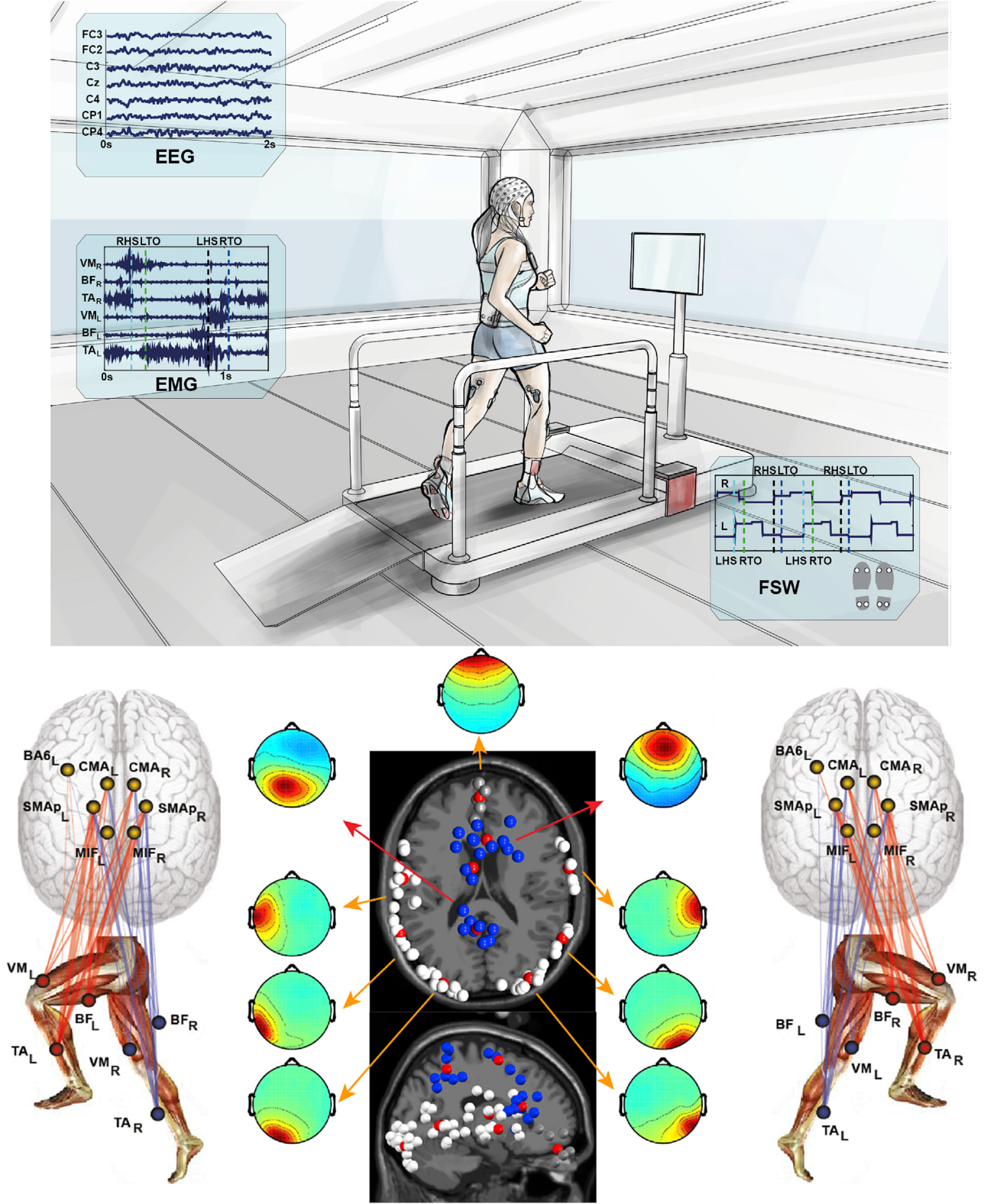The ability to walk independently is fundamental for the execution of daily life activities. Brain injuries (e.g., stroke) can cause motor damage comprising locomotion impairment with a negative impact on the quality of life. Thus, great effort is taken into restoring walking in people with brain damage. In order to get a deeper understanding of cortical involvement during walking it is necessary to develop models that represent cortical activities in relation to human walking patterns. It is known that the cortex proactively controls voluntary and precise movements and is involved only in ‘‘high-level’’ motor planning (e.g., gait initiation, addressing obstacles, etc.). Its involvement during ambulation tasks however is only hypothesized because of the limits of available imaging techniques. We are developing a new Mobile Brain/Imaging Laboratory (MoBI Lab) for the integration and the analysis of High-Density electroencephalogram (HDEEG), High-density, Medium-density and conventional electromyography (HDsEMG, MDsEMG), Ground reaction force and kinematics data. We have designed complex analysis and data fusion pipelines that will be exploited to optimize rehabilitation protocols.

References:
- Fiorenzo Artoni, Chiara Fanciullacci, Federica Bertolucci, Alessandro Panarese, Scott Makeig, Silvestro Micera, Carmelo Chisari (2017). Unidirectional brain to muscle connectivity reveals motor cortex control of leg muscles during stereotyped walking, NeuroImage
Contact
If you are interested in this research topic and wish to learn more, don’t hesitate to contact us:
Fiorenzo Artoni (fiorenzo.artoni@unige.ch)
Valeria de Seta (valeria.deseta@epfl.ch)